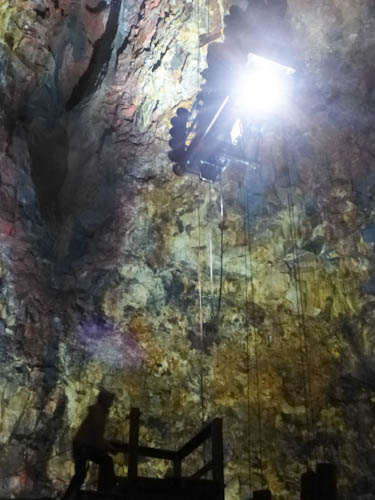

We've done all kinds of exciting things here in Iceland. We snorkeled the rift between the continents, we hiked and climbed on a glacier, we took a Zodiac raft into a glacial lagoon, and we hiked down into a lava cave. But nothing, nothing at all, was as exciting and amazing as the Inside the Volcano tour. Yes, we actually went inside a volcano.
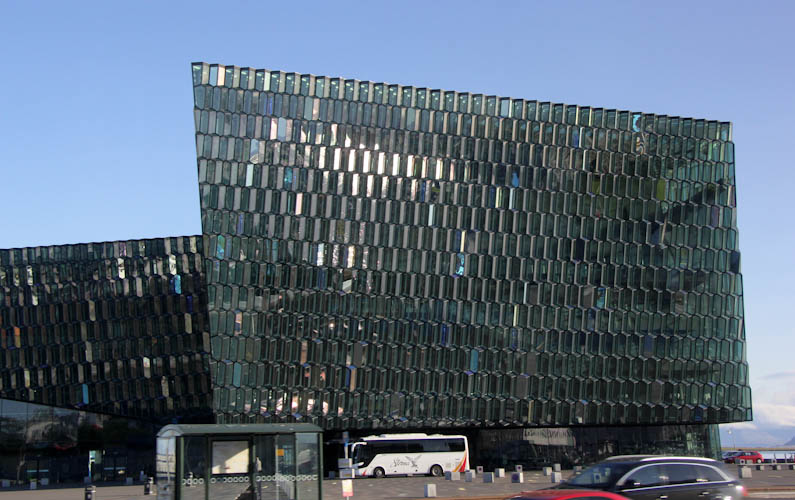
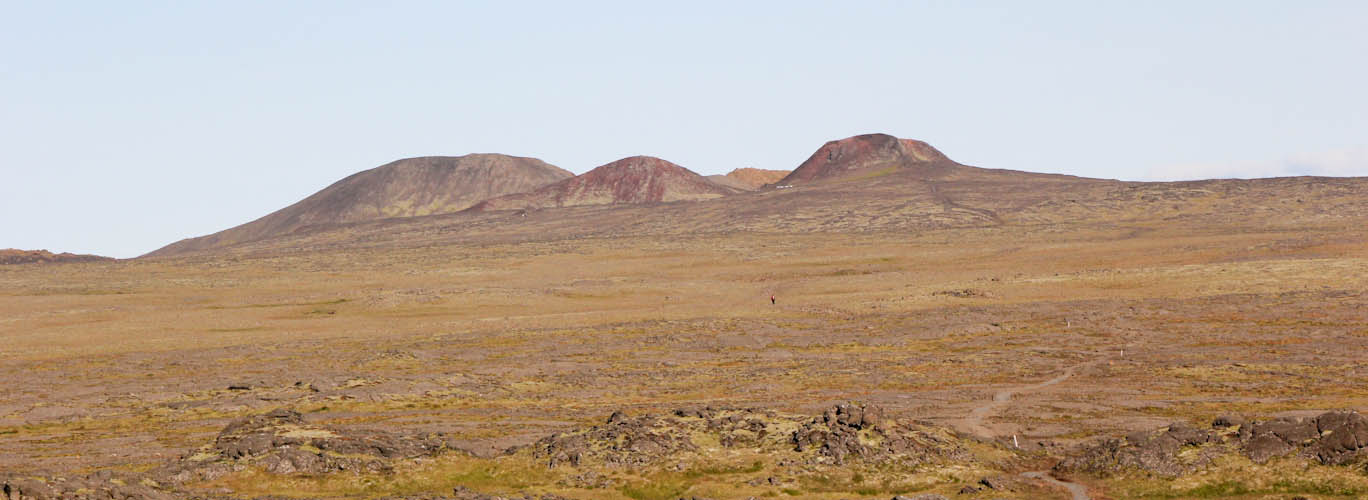
Along the way, our guide, Maria (emphasis on the first syllable), pointed out some special lava. This particular lava was created by hot magma hitting a lake. You can see a splash in the formation. She said this type of lava has only been found in three places: here (a little bit east of Reykjavík), near Lake Mývatn in northern Iceland, and on Mars. That's right, only in Iceland, and on Mars. Wow.
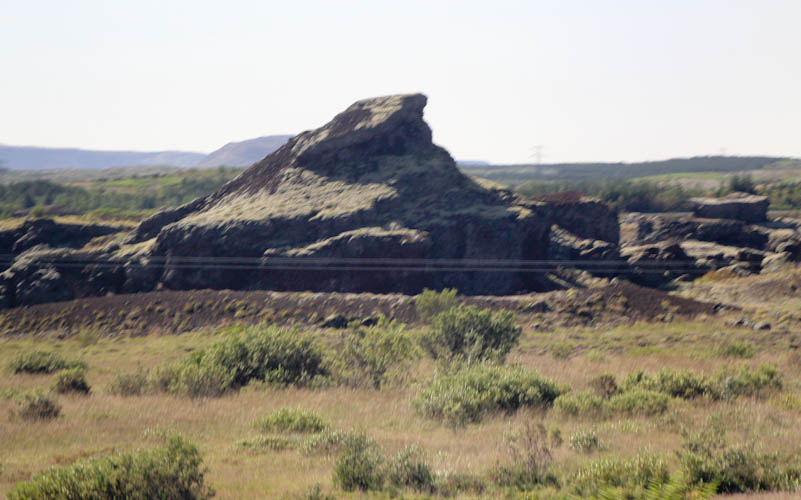
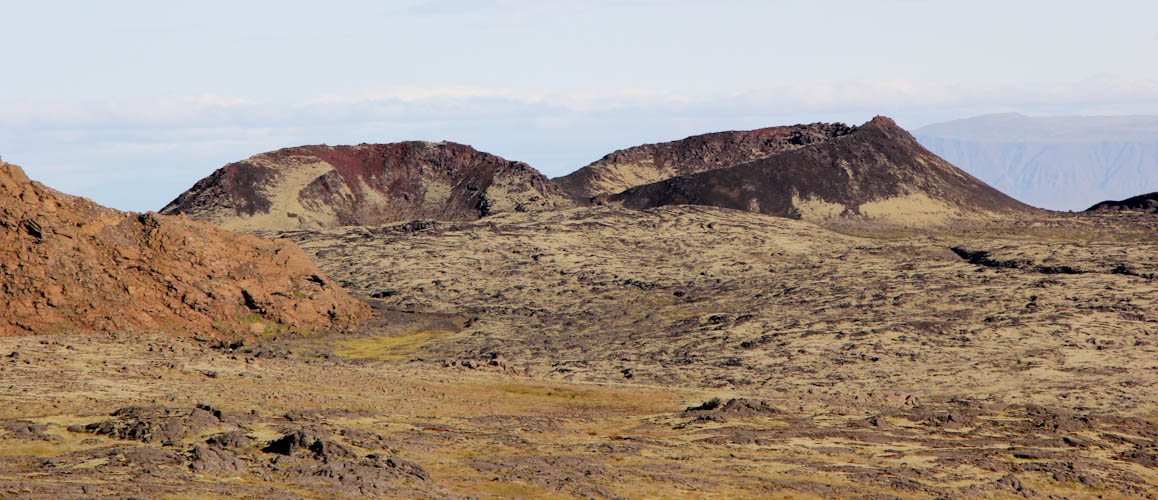
Maria explained that the volcano we would enter was especially unusual. Most volcanos either collapse and form craters that are very wide open at the top, as in the photo immediately above, or fill up with lava and have no opening at the top at all. This volcano is open at the top and yet has a large magma chamber underneath. No one knows exactly why this volcano is like this.
The volcano was discovered and explored by one man, Árni B. Stefánsson, in the 20th century. He had his friends lower him through the narrow opening on a rope. They were prepared to pull him up quickly in the event that he discovered that the volcano was full of noxious gases. However, he found that the air was breathable, and he found the large magma chamber below. The tour company's web site tells us that the Statue of Liberty could easily fit inside the chamber. He and others became excited about exploring this very unusual place.
To get to the volcano, you have to hike out 3 km (2 mi) from the road, through a moss-covered lava field.
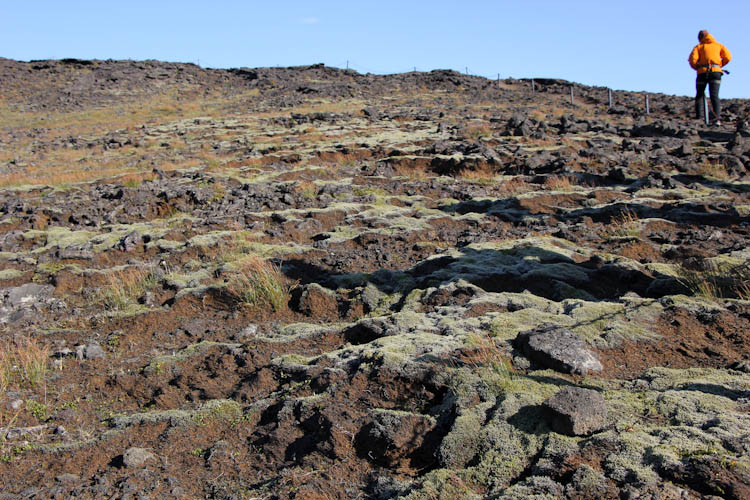
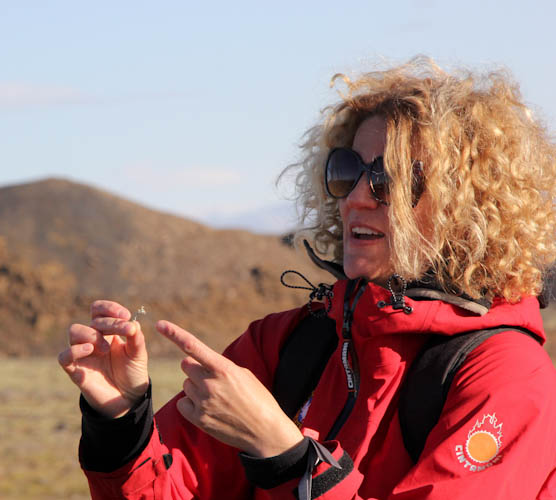
She told us that this lichen helped Icelanders survive through the winters in the Middle Ages. During the summer, they would climb up into the mountains and collect large bags of the lichen. They would then grind it into a flour and eat it through the winter.
Remember that, almost a week ago, we snorkeled through the Silfra Rift between Europe and North America?
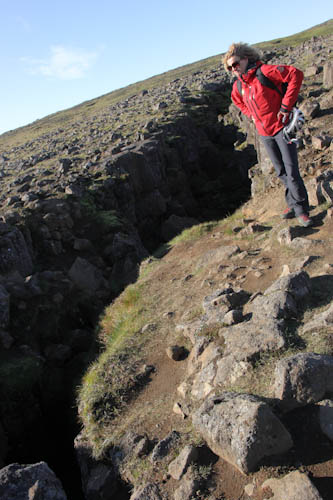
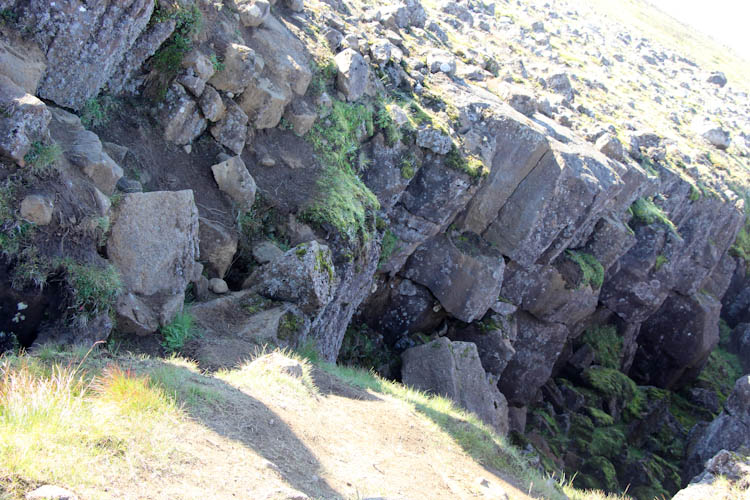
As we walked, Maria told us an Icelandic story. Some outlaws have survived for long periods by living up in the mountains all by themselves. In the 18th century, there was a man, Fjalla-Eyvindur, who survived living this way for several years. We know that he actually existed, because there are church records of him. Eventually, he got lonely and came into town in a disguise. He married a woman named Halla, who had his baby. We know she also existed, because there are church records of her as well. From the church records and descriptions of the couple, they were apparently very ugly. But in the 20th century, the Icelandic playwright Jóhann Sigurjónsson wrote a play about the couple, in which they were presented as very attractive. Fjalla-Eyvindur was eventually discovered, however, and the couple ran from civilization with the baby. Eventually, they had to sacrifice the baby by throwing it into a waterfall. There is an Icelandic lullaby about this story, and Icelandic parents sing their children to sleep to a song about throwing a baby into a waterfall. [I didn't quite remember all of the details from Maria's description, so I supplemented this with material from Iceland Review.] I found some interesting parallels between this story and the story in the graphic novel Saga (vol. 2 nominated for a Hugo this year), and, given the name of the novel, I wondered whether it was influenced by this Icelandic story.
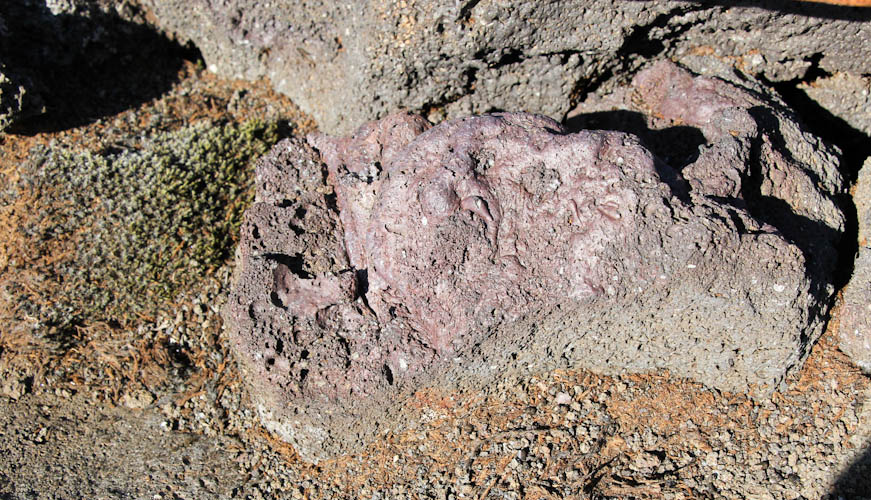
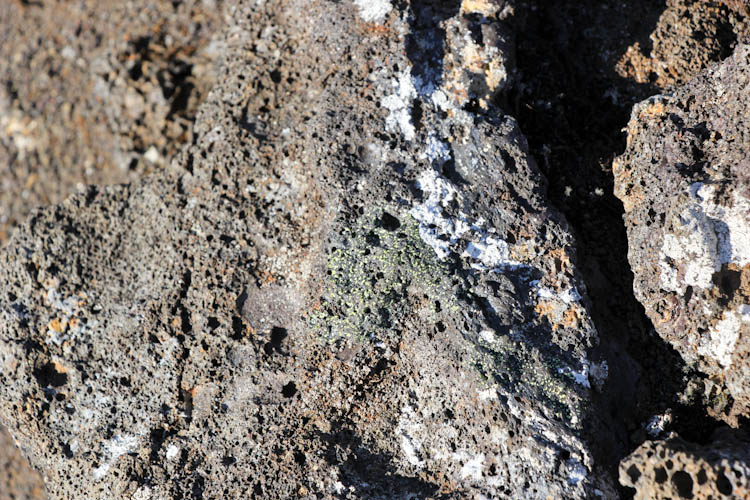
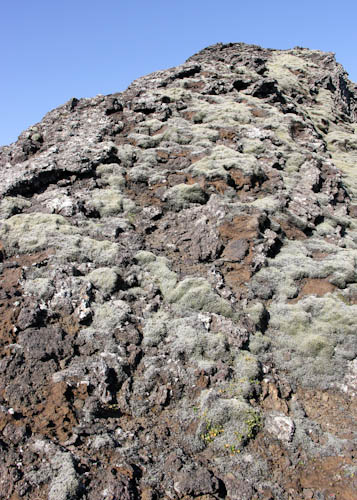
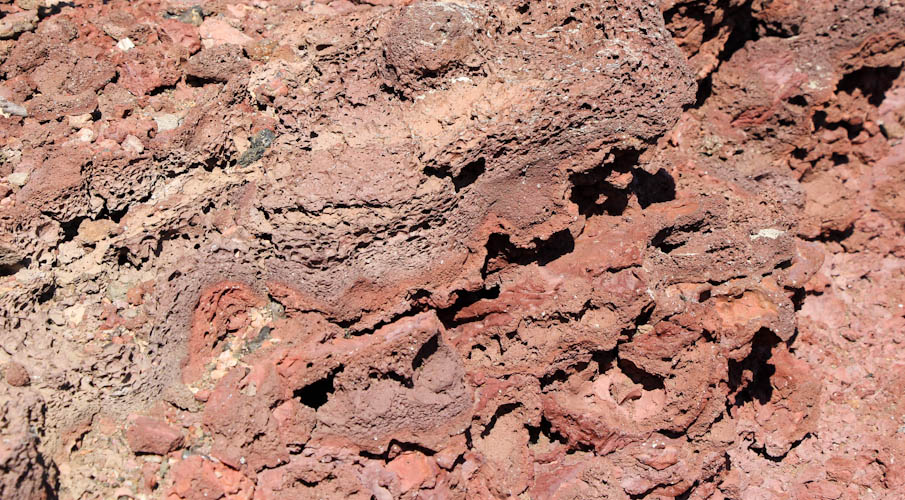
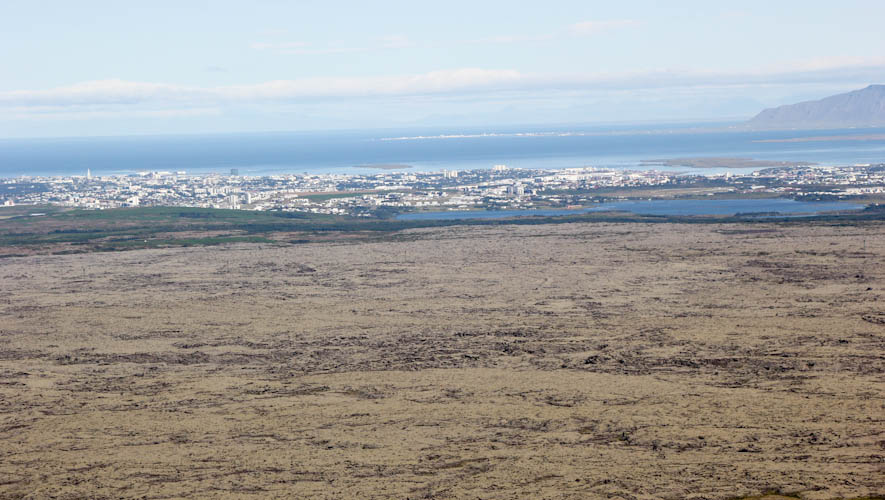
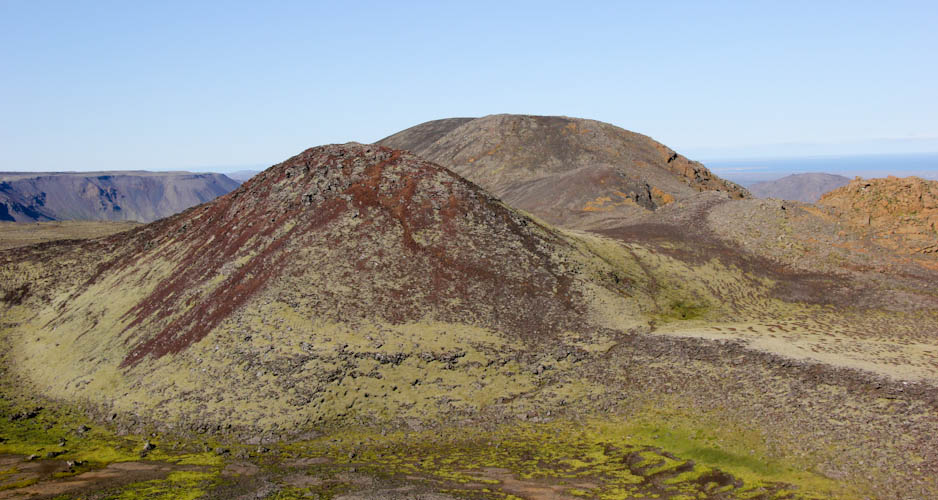
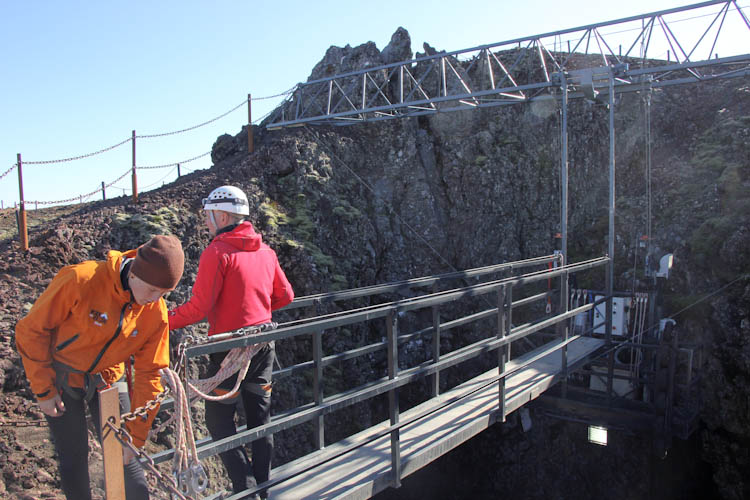
We had to wear harnesses and get clipped onto the machine just in case, but it was not an unpleasant ride seven minutes down. There were some head hazards at the narrowest point, so they gave us helmets as well. The base camp manager, who issued all of the equipment, at one point hunched down and starting crawling around like Gollum. He was quite good at imitating the character. It's just so hard not to make millions of Lord of the Rings jokes when there are so many volcanoes around.
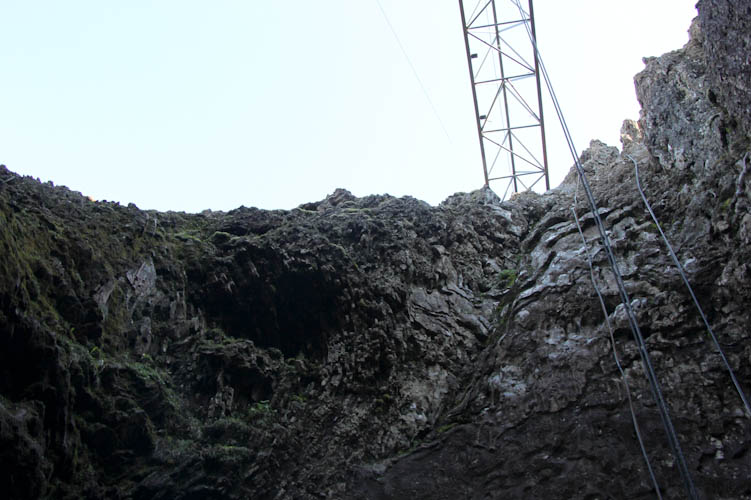
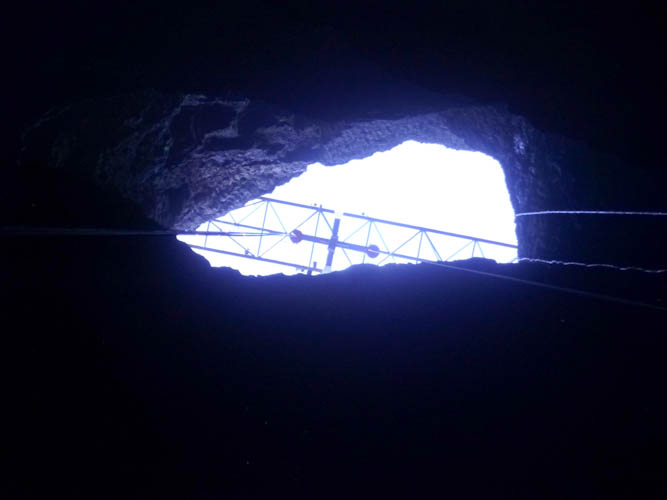
We came to the bottom, and found ourselves in a wide-open chamber full of chunky 'a'a lava. The tour company's web site tells us that the chamber is 50 by 70 m (160 by 220 ft) at the bottom. The tour company had installed several sodium lights, so it was not completely dark. We could see to walk around on the rough terrain. We were given half an hour to explore the chamber. We were allowed to climb all over the area, except right under the lift, in case someone dropped something.
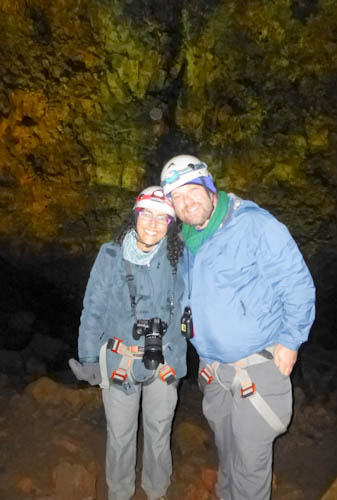
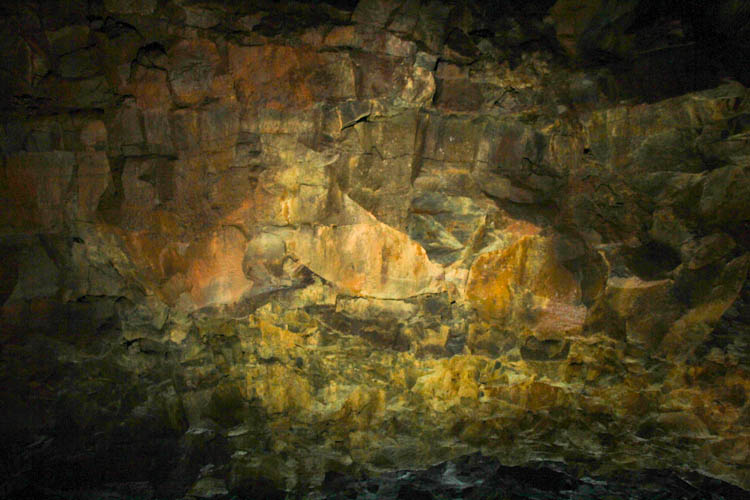
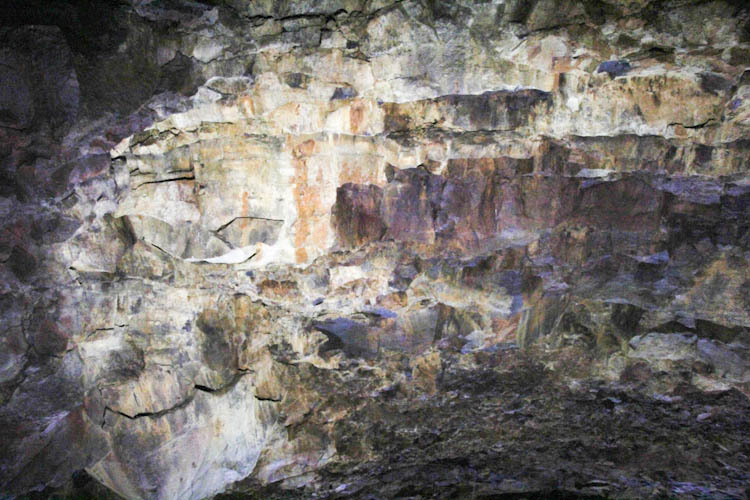
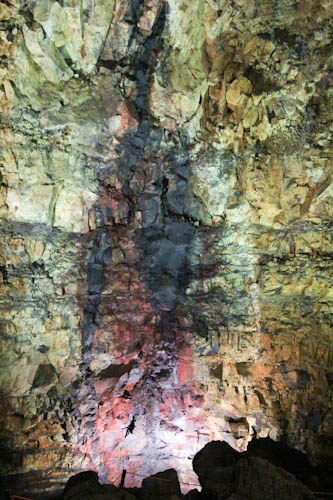
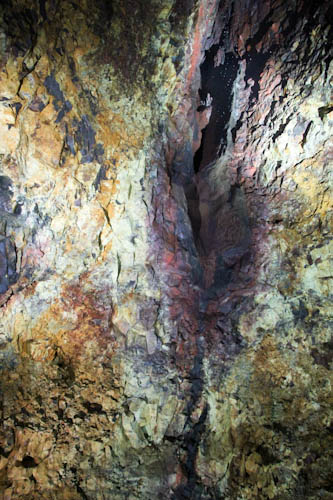
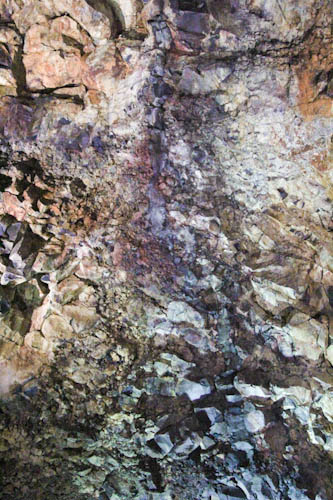
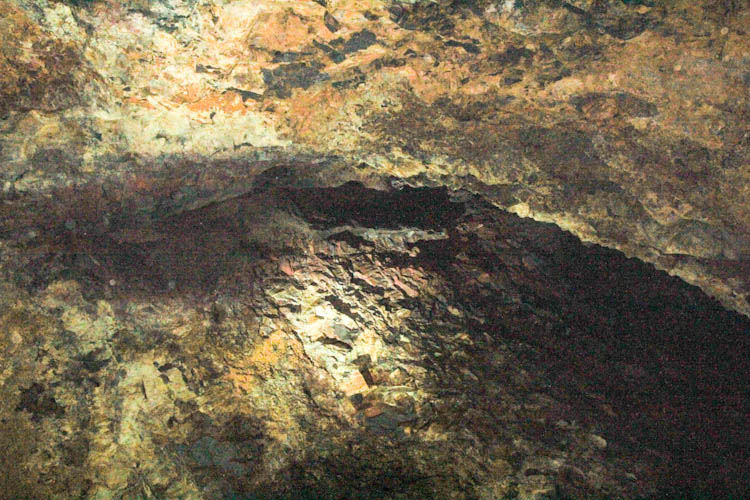
This volcano last erupted 4,500 years ago. It is dormant, but not extinct. It could erupt again.
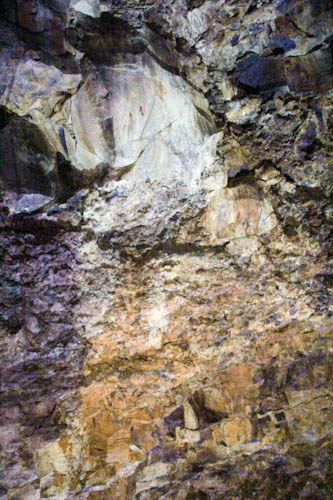
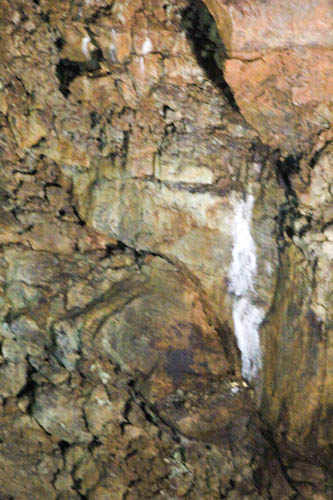
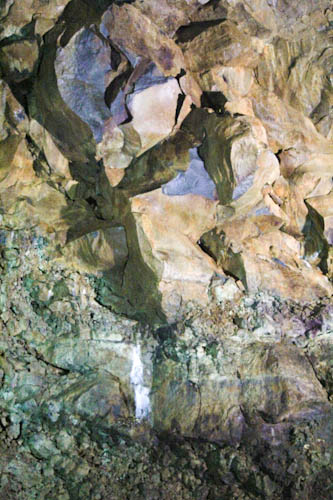
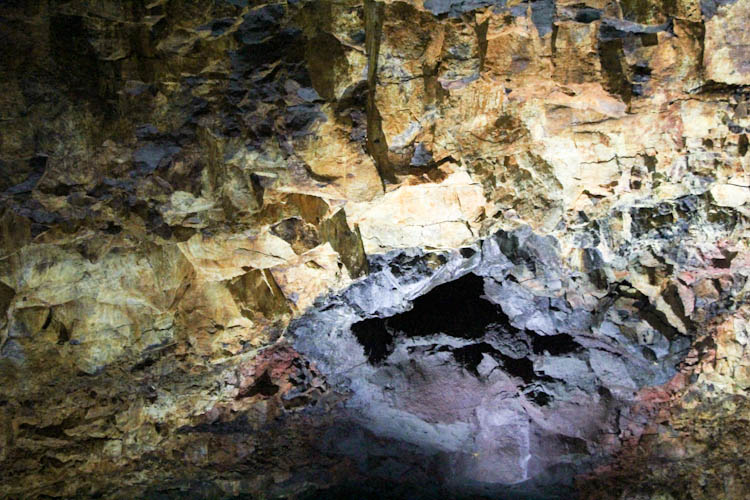
Maria said that the hole was as yet unexplored, because no one had quite figured out how to get to it. Someone would have to bring a very tall ladder down through the opening. I suggested that maybe someone could swing Indiana Jones-style from the German window-cleaning lift.
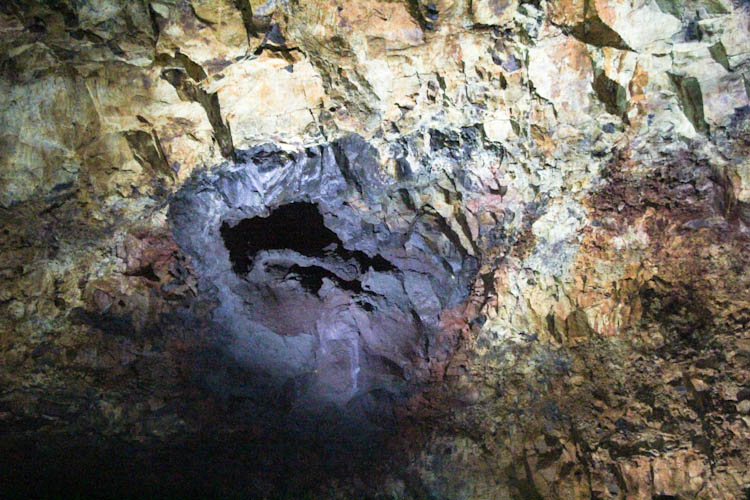
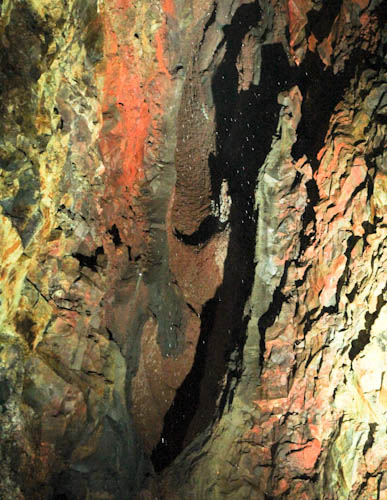
Maria pointed out that the acoustics in the chamber were wonderful. She sang us the Icelandic lullaby about the baby being thrown into the waterfall. Her voice was lovely.
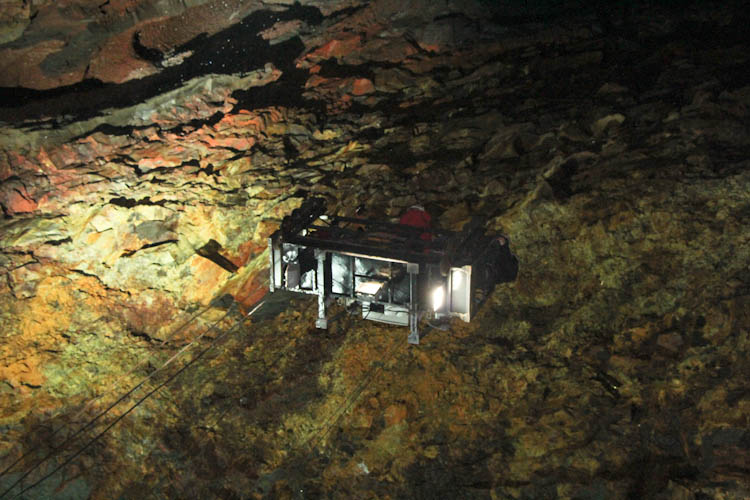
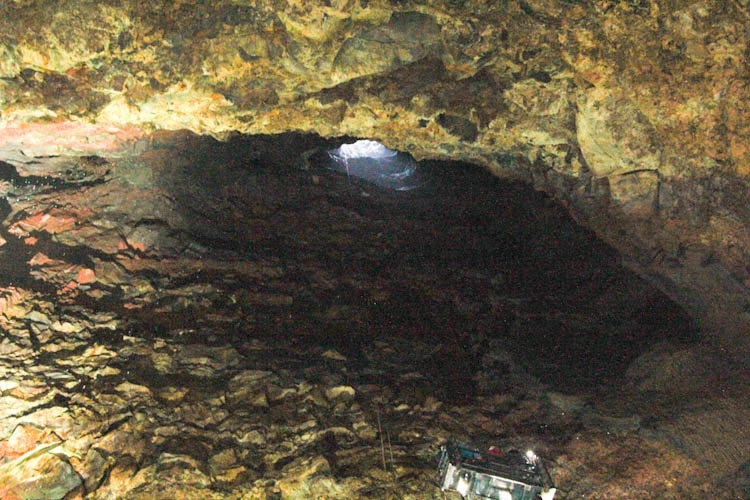
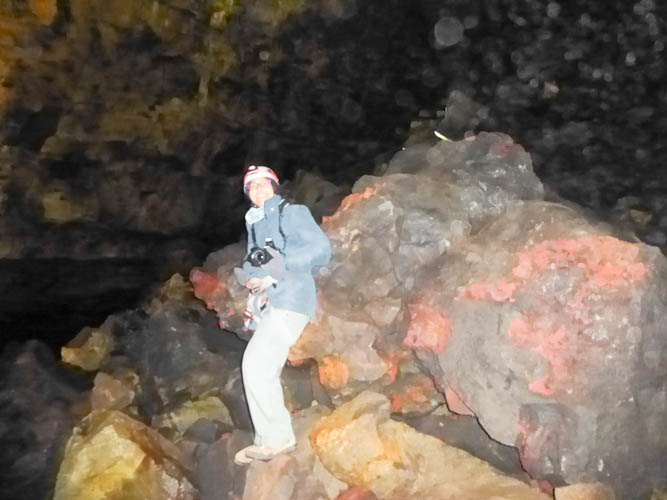
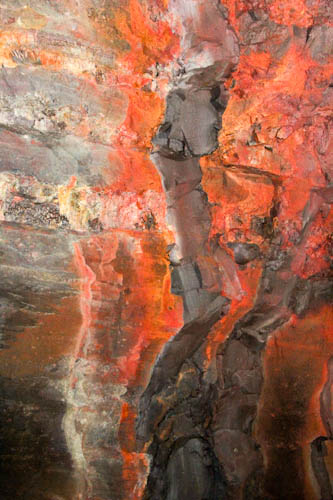
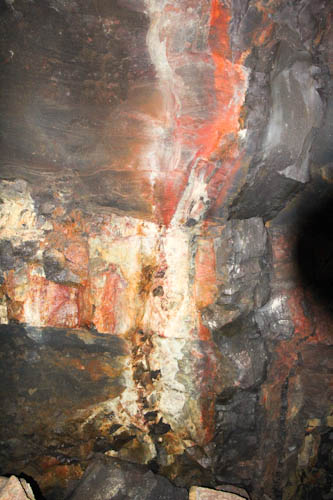
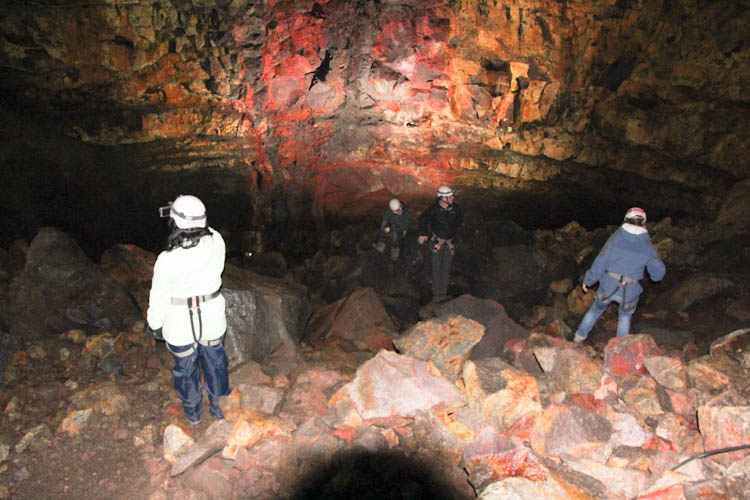
For those of you who don't love volcanoes the way we do, volcanologists classify most lava into two categories, using the Hawai'ian names: 'a'a and pahoehoe. Molten flows that ultimately become 'a'a typically cool faster than those that become pahoehoe, because of the terrain over which they are flowing. As the molten lava cools, it thickens, and its movement squeezes gas bubbles (vesicles) out of it. The relatively few vesicles that are left get pressed into irregular shapes, and the lava also crystallizes as it cools. These factors give 'a'a a jagged, rocky appearance when it cools and dries. Pahoehoe, on the other hand, usually stays very hot as it travels further from the source of the eruption. It doesn't get thick and chunky along the way, and thus has nice, round, spherical vesicles. It dries and hardens with a ropy appearance the texture of brownie dough. It is quite easy to distinguish the two when walking on them: You need much sturdier shoes for 'a'a. [Source: USGS]
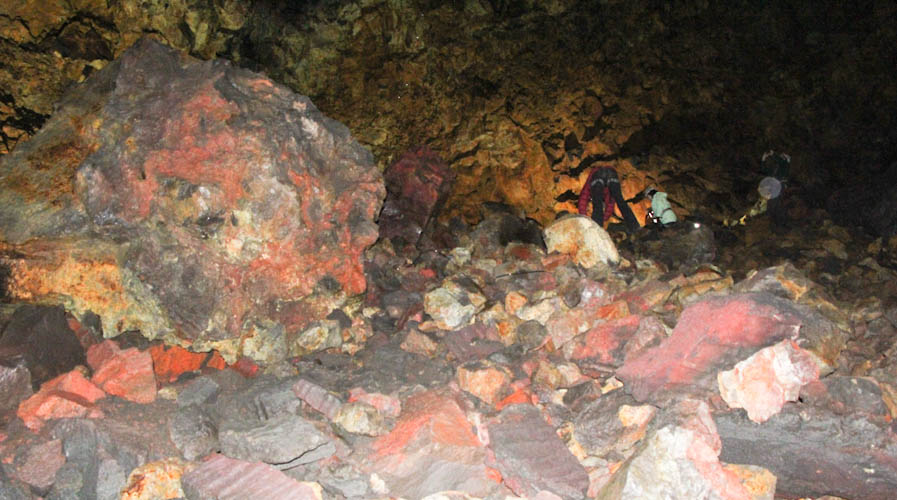
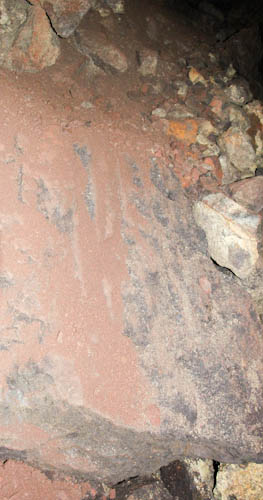
We had to clamber up from the far side of the chamber, as we could see the German window-cleaning lift coming down for us.
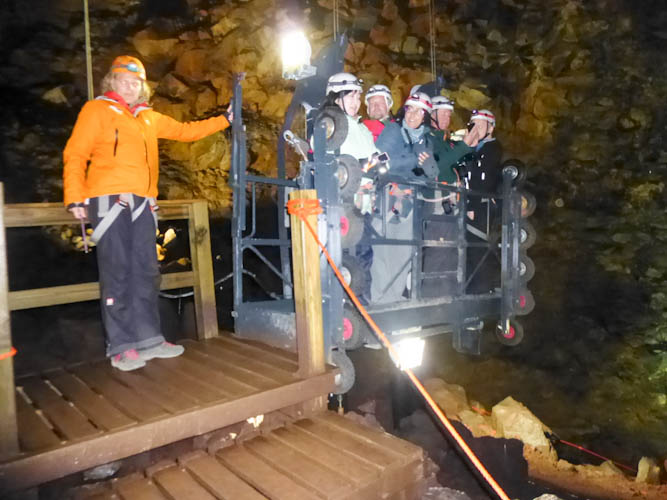
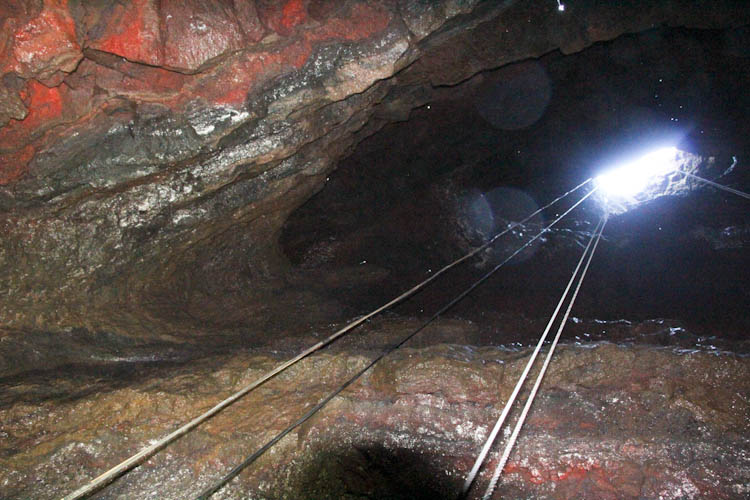
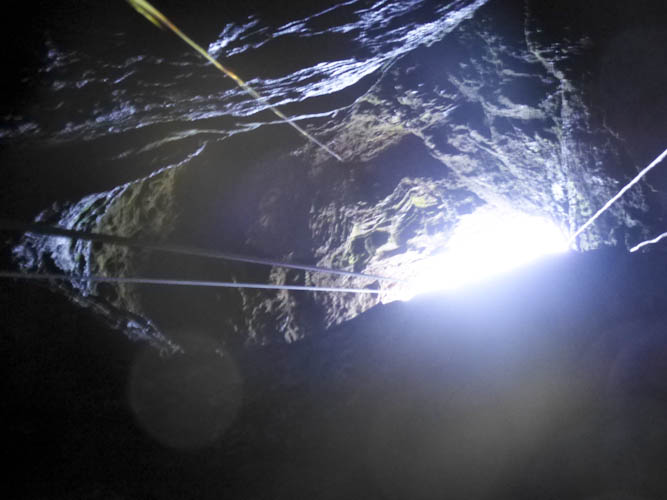
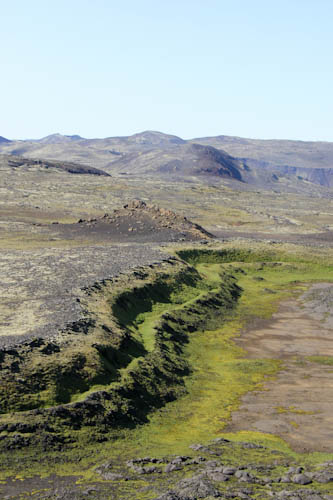
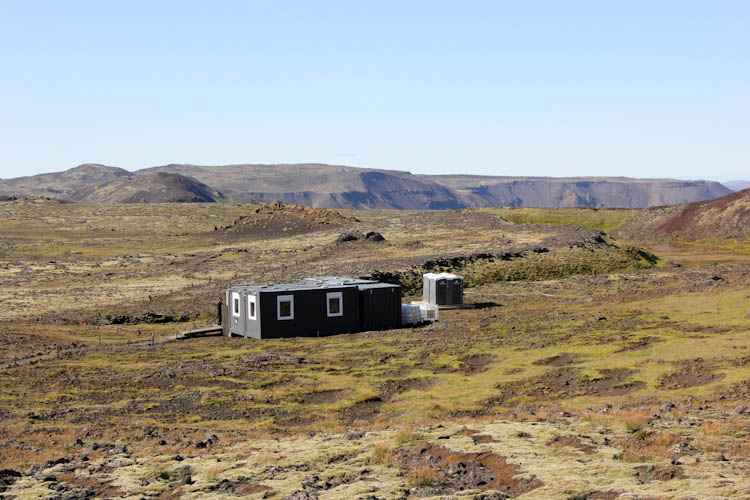
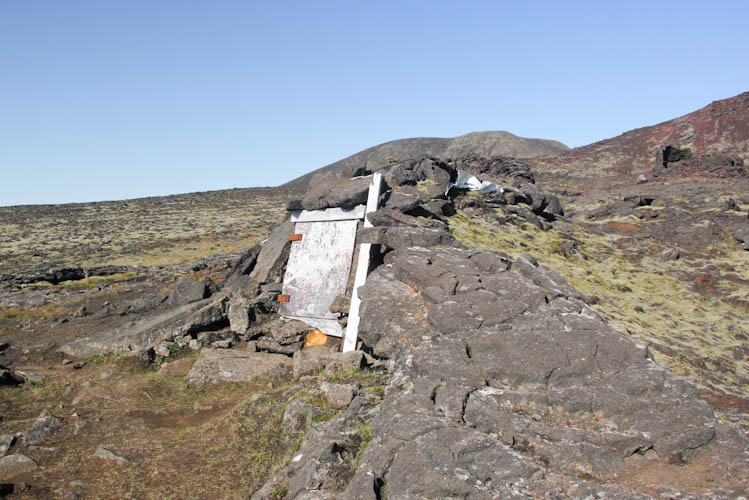
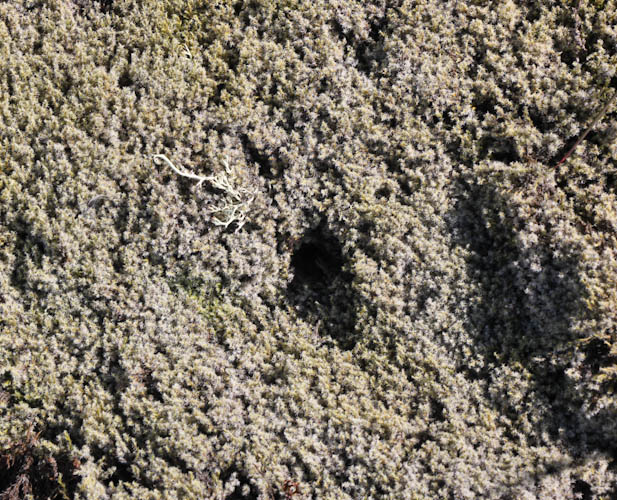
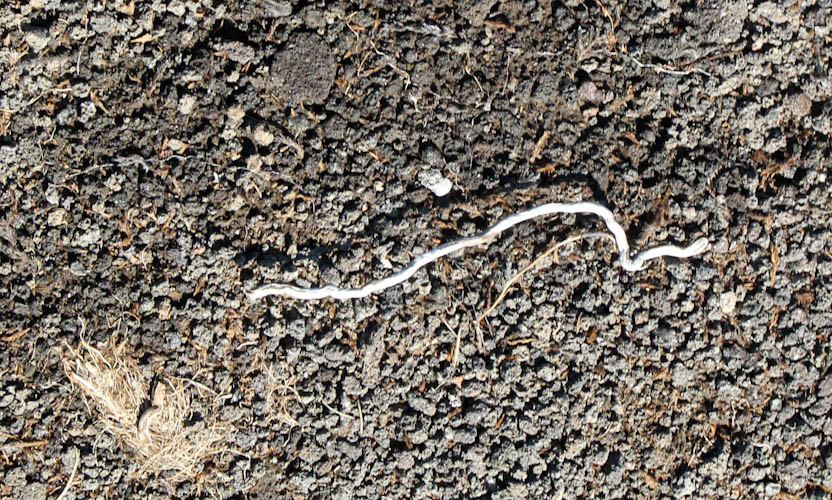
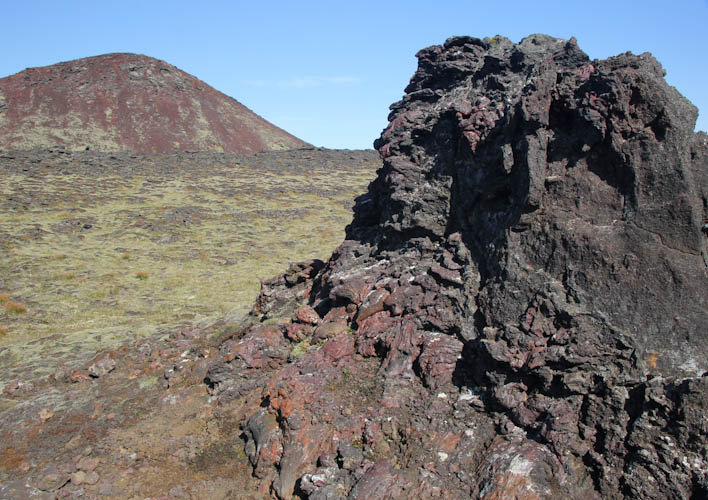
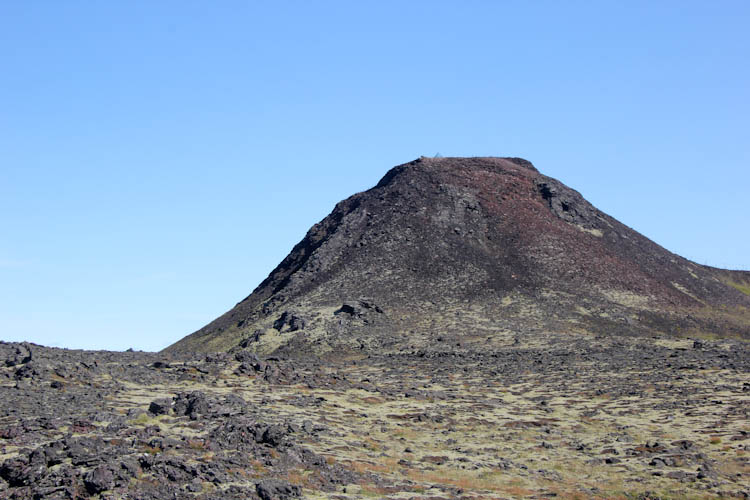
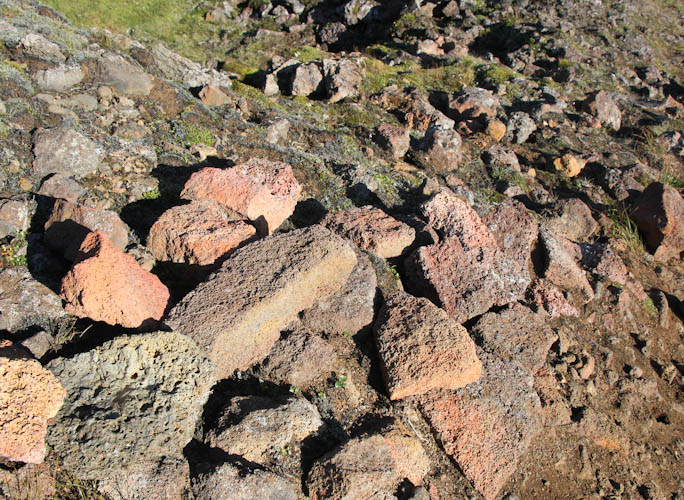
Our guides next served us a traditional Icelandic lamb stew (although they made a vegetarian version for Eric). It was nicely flavored with herbs. Then, it was time to head back all the way to the road.
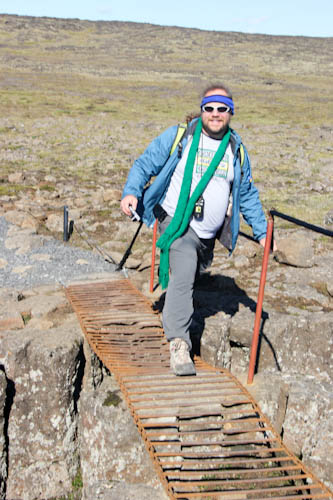
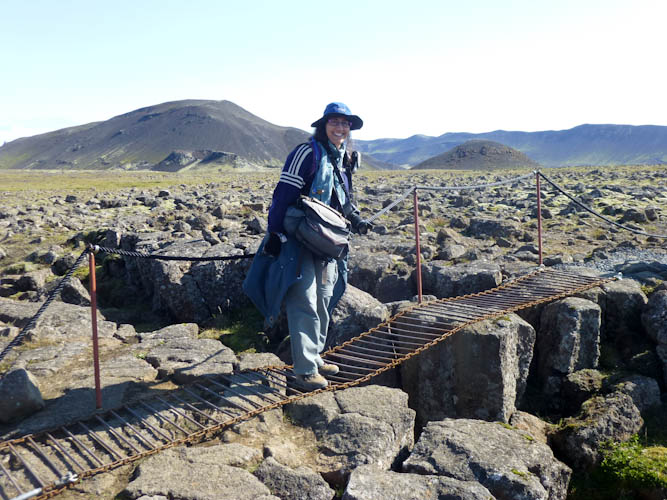
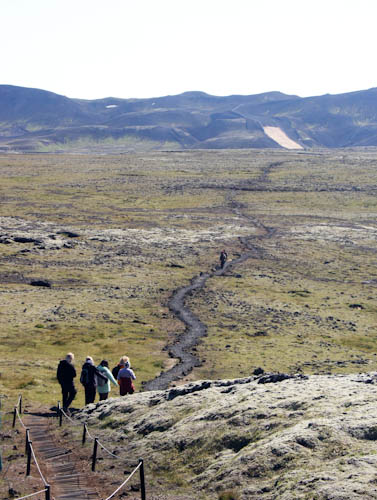
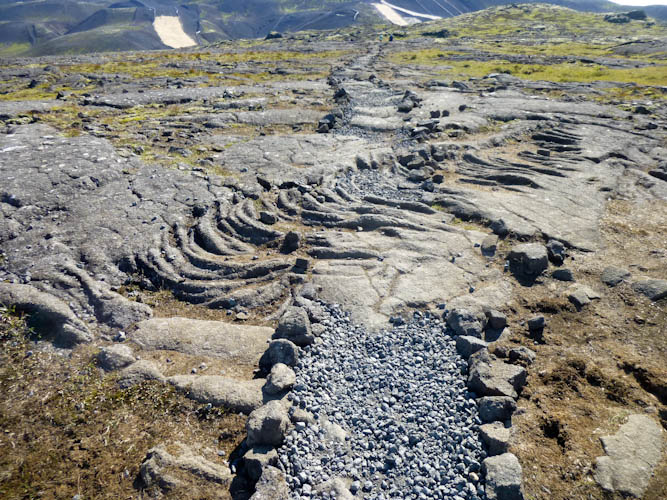
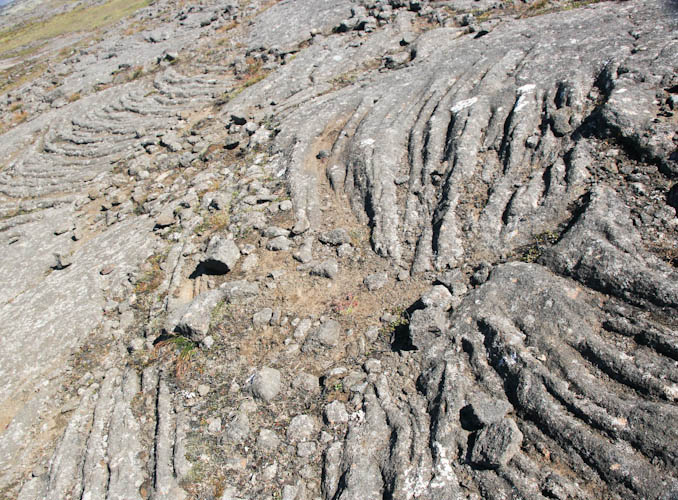
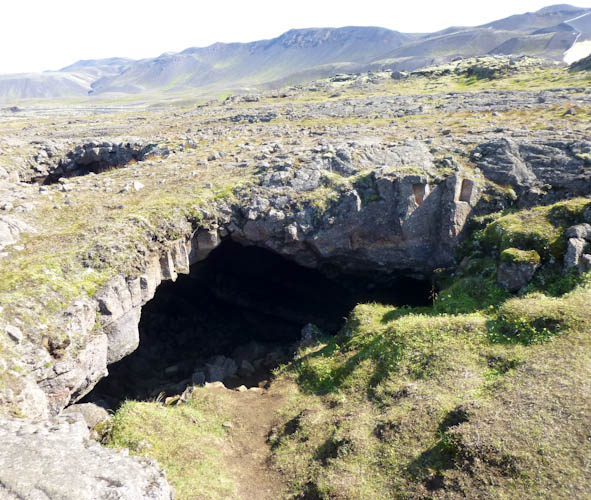
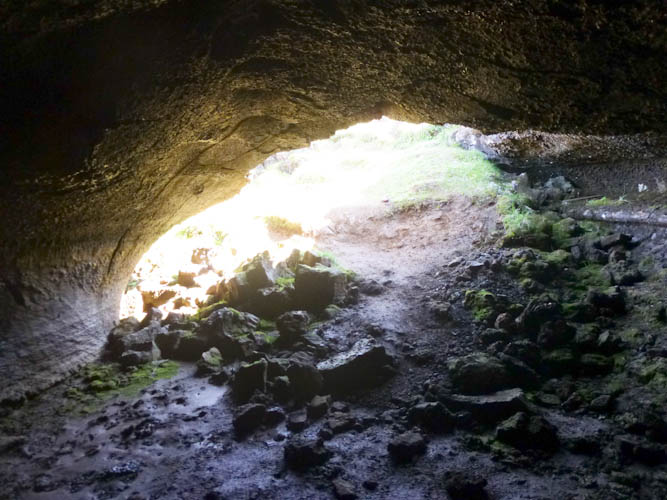
Well, that was a truly unique and special experience! We were aware that we would probably never do anything like that ever again. I am so grateful we had such an opportunity.
Maria did tell us that there are ideas for further development of the Inside the Volcano tour. The tour company wants to build a road out to the volcano (to save the hike), and then bore a hole into the bottom of the chamber and build a tunnel so that you could walk to it in high heels. It is not certain that this will happen, but it is on the drawing board. She says she will quit her job if it happens. She thinks you should earn an adventure like this by hiking out through the lava. Also, of course, the hole would ruin the chamber. I think we need some unscrupulous seismic engineers to tell the owners that it would be impossible to build such a tunnel without collapsing the chamber. I'm sure they could come up with some convincing PowerPoint presentations. Eric points out that these are the perils of privatization.
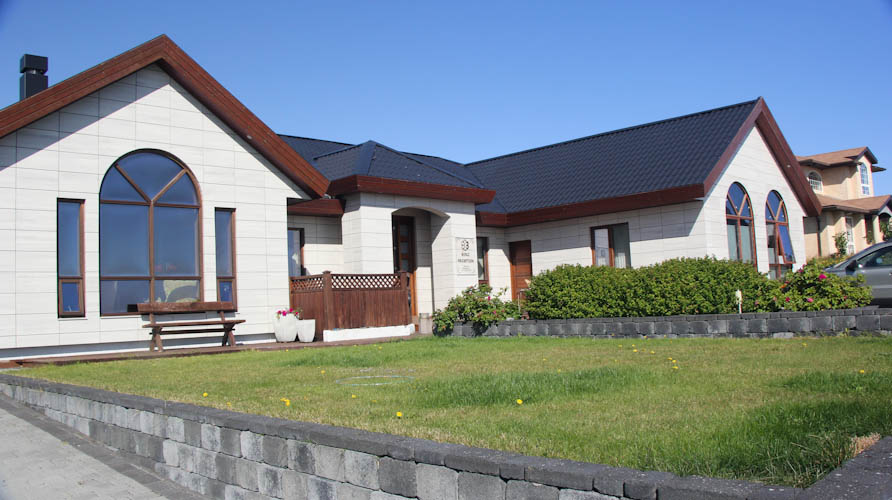
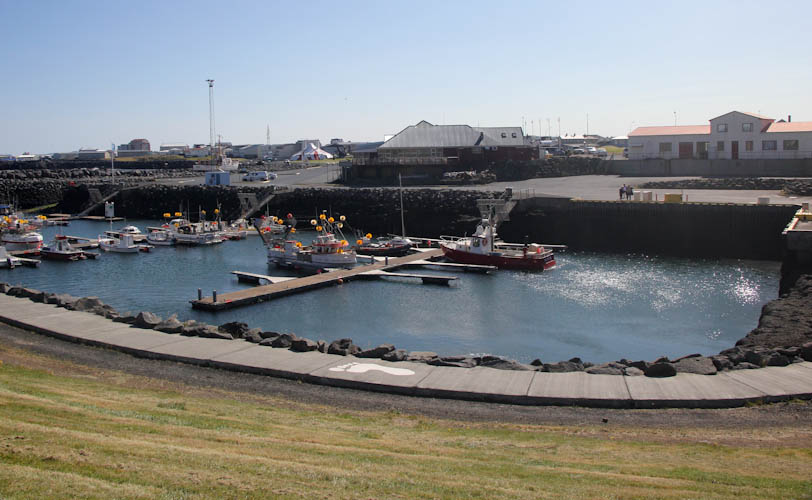
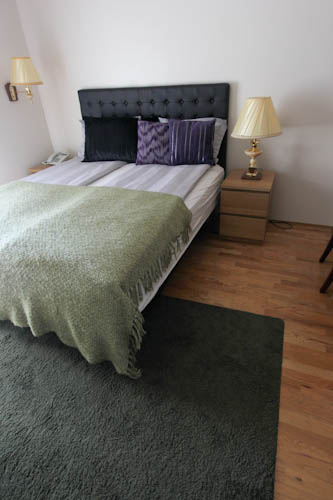
We dropped off our luggage, but we had one more mission, what everyone must do before leaving Iceland: visit Blaá Lónið, the famous Blue Lagoon. Blaá Lónið is near the airport, so everyone stops by just before leaving the country. There are facilities for storing all of your luggage.
Everyone knows that Blaá Lónið is a spa, but not everyone knows that it is created by runoff from the nearby Svartsengi geothermal power plant. We searched for (but did not find) a geocache in the parking lot, and the geocaching listing says that the spa was created accidentally. Apparently, geologists believed that the runoff from the power plant would seep into the ground, but instead it formed a pool. While every source I have checked (Lonely Planet's Iceland, wikipedia.org) confirms that the water in Blaá Lónið comes from the geothermal plant, I have not been able to confirm that its creation was actually an accident, so I offer that information with a grain of salt. In any case, this is clearly the best use of industrial waste in the history of, well, industrial waste.
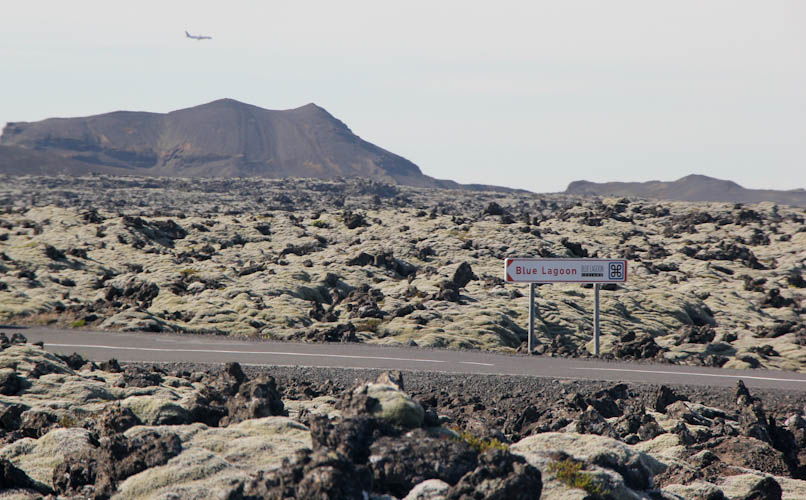
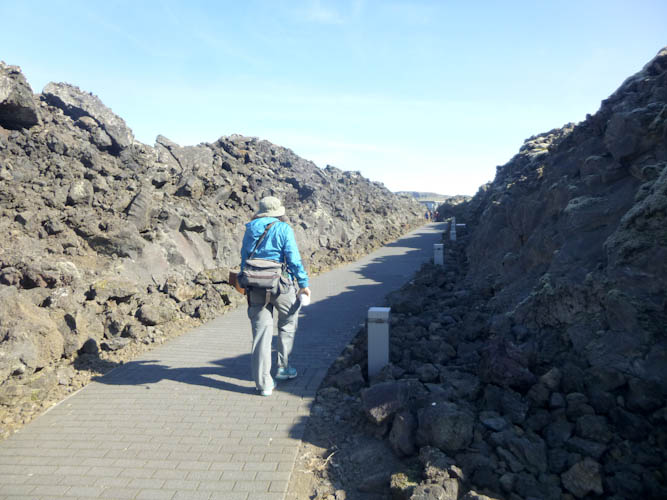
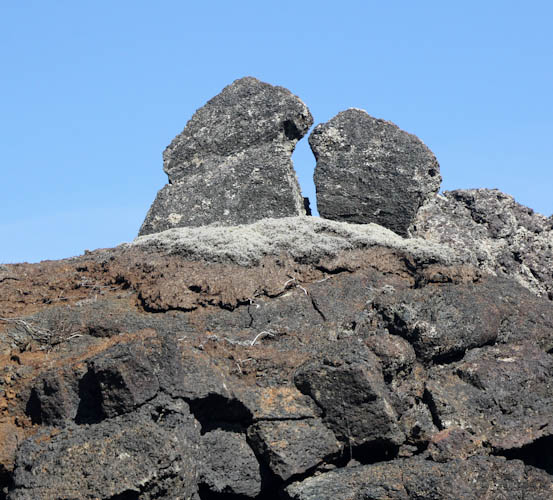
When you enter, you are issued a plastic bracelet with a sensor, which you can use to charge any food or incidentals you might want to buy. You have to scan your bracelet and pay for anything you bought on your way out.
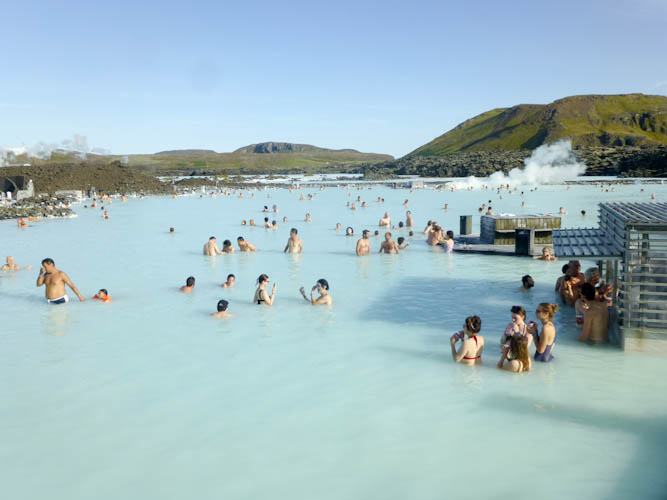
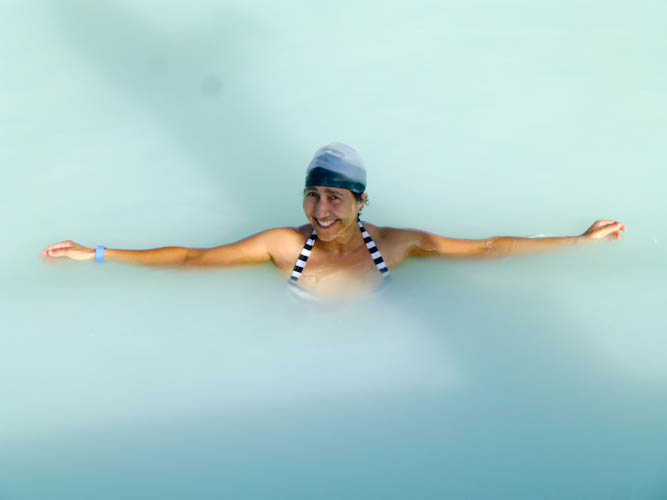
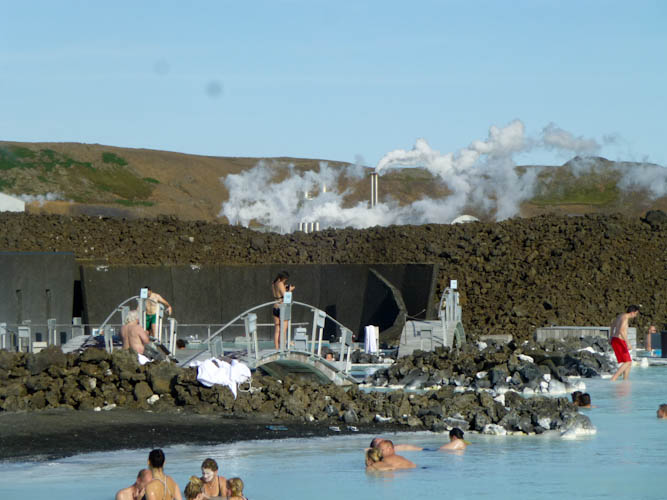
They have a silica mud that you can put on your face as a spa treatment, included in the (high) price of entry. You can see someone in the picture with the silica mud on her face.
As you can see from the above picture, the lagoon is very developed, with cute little bridges and even a bar to the side of it. This was clearly one of the most touristy things we had done in Iceland. But it is a real geothermal pool, full of nice, hot, mineral-rich water. Overdeveloped as it is, there's nothing fake about it.
We needed to get to sleep for an early flight the next day, so we quickly had sandwiches and the wonderful Icelandic yoghurt in a café at Blaá Lónið.
As we returned to the hotel and prepared for bed, I thought that I had never been so sad about getting on a plane for London. I loved Iceland so much, I didn't want to leave!
On to London!